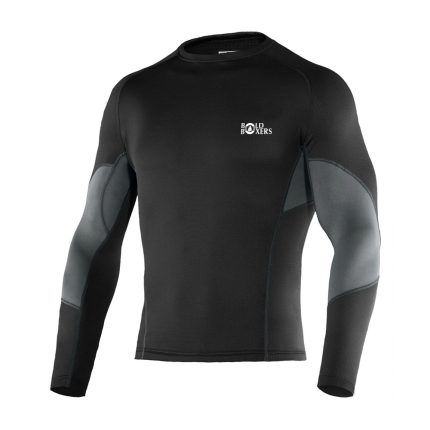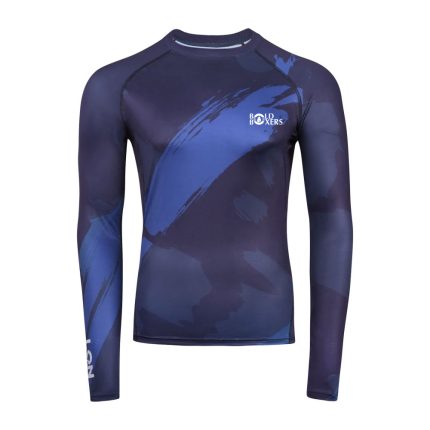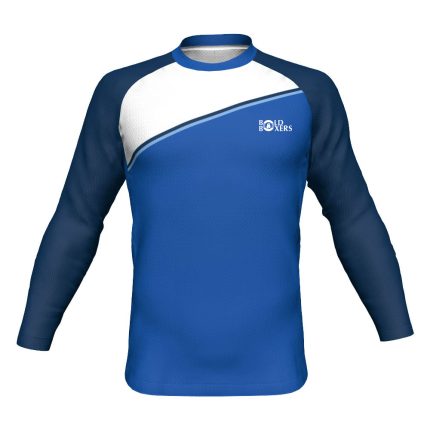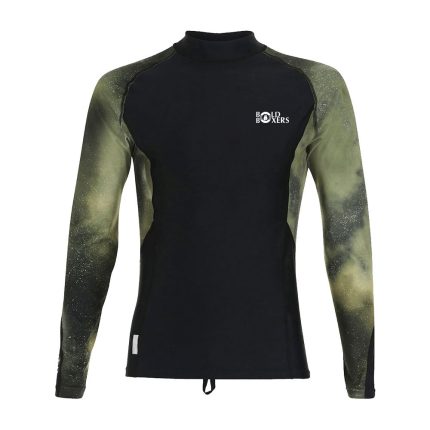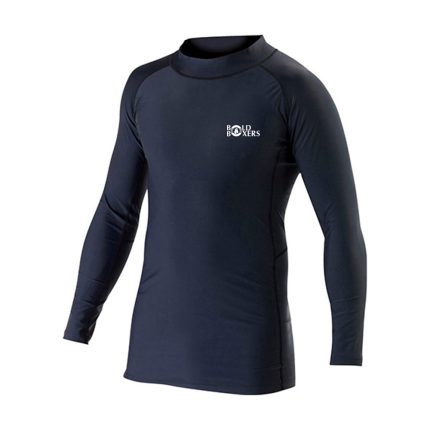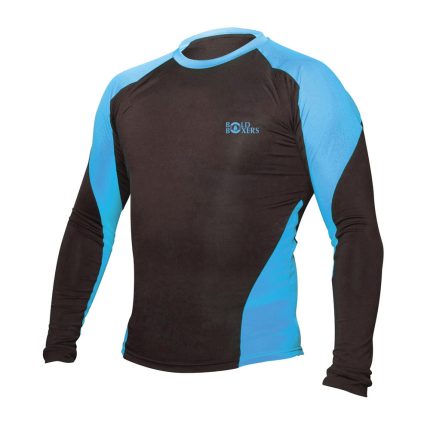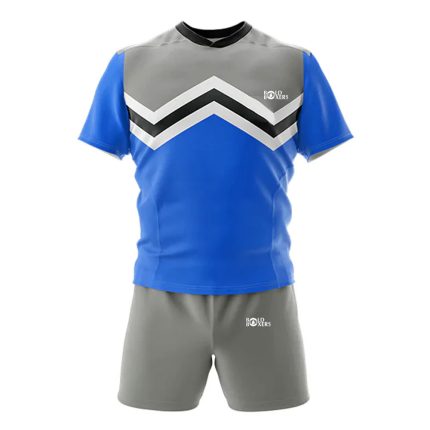Rash Guard
- Rash guards are lightweight, quick-drying garments primarily worn in water sports to protect the skin from irritation and sun exposure.
- Made from stretchy, breathable fabric, they offer a snug fit without restricting movement.
- Rash guards provide UPF sun protection, shielding against harmful UV rays.
- Their smooth, flatlock seams minimize chafing and irritation, making them comfortable for extended wear.
- Popular among surfers, swimmers, and other water enthusiasts, they can also be used for other outdoor activities like hiking and running.
- Available in various sleeve lengths and designs, including long-sleeve, short-sleeve, and sleeveless options, to suit different preferences and needs.
Rash Guard
- Rash guards are lightweight, quick-drying garments primarily worn in water sports to protect the skin from irritation and sun exposure.
- Made from stretchy, breathable fabric, they offer a snug fit without restricting movement.
- Rash guards provide UPF sun protection, shielding against harmful UV rays.
- Their smooth, flatlock seams minimize chafing and irritation, making them comfortable for extended wear.
- Popular among surfers, swimmers, and other water enthusiasts, they can also be used for other outdoor activities like hiking and running.
- Available in various sleeve lengths and designs, including long-sleeve, short-sleeve, and sleeveless options, to suit different preferences and needs.
Rash Guard
- Rash guards are lightweight, quick-drying garments primarily worn in water sports to protect the skin from irritation and sun exposure.
- Made from stretchy, breathable fabric, they offer a snug fit without restricting movement.
- Rash guards provide UPF sun protection, shielding against harmful UV rays.
- Their smooth, flatlock seams minimize chafing and irritation, making them comfortable for extended wear.
- Popular among surfers, swimmers, and other water enthusiasts, they can also be used for other outdoor activities like hiking and running.
- Available in various sleeve lengths and designs, including long-sleeve, short-sleeve, and sleeveless options, to suit different preferences and needs.
Rash Guard
- Rash guards are lightweight, quick-drying garments primarily worn in water sports to protect the skin from irritation and sun exposure.
- Made from stretchy, breathable fabric, they offer a snug fit without restricting movement.
- Rash guards provide UPF sun protection, shielding against harmful UV rays.
- Their smooth, flatlock seams minimize chafing and irritation, making them comfortable for extended wear.
- Popular among surfers, swimmers, and other water enthusiasts, they can also be used for other outdoor activities like hiking and running.
- Available in various sleeve lengths and designs, including long-sleeve, short-sleeve, and sleeveless options, to suit different preferences and needs.
Rash Guard
- Rash guards are lightweight, quick-drying garments primarily worn in water sports to protect the skin from irritation and sun exposure.
- Made from stretchy, breathable fabric, they offer a snug fit without restricting movement.
- Rash guards provide UPF sun protection, shielding against harmful UV rays.
- Their smooth, flatlock seams minimize chafing and irritation, making them comfortable for extended wear.
- Popular among surfers, swimmers, and other water enthusiasts, they can also be used for other outdoor activities like hiking and running.
- Available in various sleeve lengths and designs, including long-sleeve, short-sleeve, and sleeveless options, to suit different preferences and needs.
Rash Guard
- Rash guards are lightweight, quick-drying garments primarily worn in water sports to protect the skin from irritation and sun exposure.
- Made from stretchy, breathable fabric, they offer a snug fit without restricting movement.
- Rash guards provide UPF sun protection, shielding against harmful UV rays.
- Their smooth, flatlock seams minimize chafing and irritation, making them comfortable for extended wear.
- Popular among surfers, swimmers, and other water enthusiasts, they can also be used for other outdoor activities like hiking and running.
- Available in various sleeve lengths and designs, including long-sleeve, short-sleeve, and sleeveless options, to suit different preferences and needs.
Rugby Uniform
Rugby uniforms are designed to withstand the physical demands of the sport while providing comfort, protection, and team identification. Here are the key components:
- Jersey: Rugby jerseys are made from durable, moisture-wicking fabric to keep players dry and comfortable during the game. They feature the team’s colors, logo, and often player numbers.
- Shorts: Rugby shorts are typically made from sturdy, abrasion-resistant material to withstand tackles and scrums. They offer freedom of movement and are usually loose-fitting for comfort.
- Socks: Rugby socks are knee-length and made from thick, durable material to provide protection and support. They often feature the team’s colors and may include a fold-over top.
- Cleats: Rugby players wear cleats or boots with studs to provide traction and grip on the field. These boots are designed for stability and support during running, tackling, and scrummaging.
- Mouthguard: A mouthguard is essential protective gear worn by rugby players to protect the teeth, mouth, and jaw from impact during tackles and collisions.
- Headgear (optional): Some rugby players choose to wear headgear for added protection against head injuries. Rugby headgear typically features padding around the ears and temples.
- Shoulder pads (optional): While less common in rugby compared to American football, some players may choose to wear shoulder pads for added protection during tackles and scrums.

